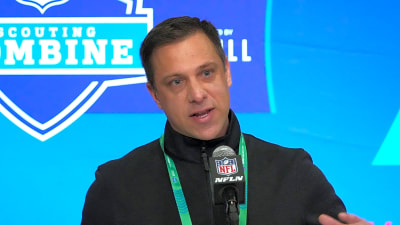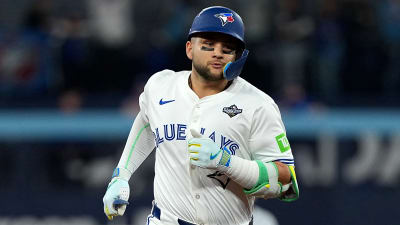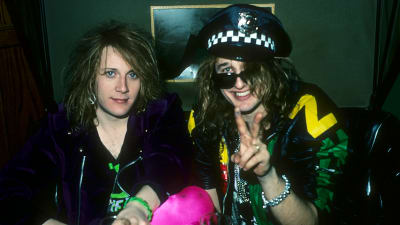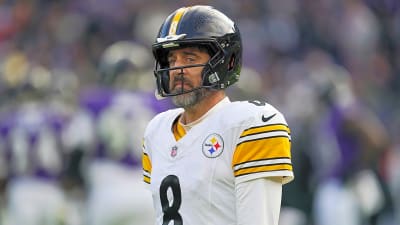
The San Diego Padres have made plenty of bold moves over the years, some of which have shaped the franchise for the better. However, not every trade has worked out as planned. From dealing away future stars to taking on risky veterans, these missteps have left fans wondering what might have been. Here’s a look at five of the worst Padres trades since 2000.
The Five Worst Padres Trades This Century
5. Jason Bay to Pittsburgh (2003)
In August 2003, the Padres traded Jason Bay, Óliver Pérez, and Cory Stewart to the Pittsburgh Pirates for Brian Giles. At the time, Giles was an established star. The Padres hoped his bat would help anchor their lineup as they moved into Petco Park. While Giles had some solid years in San Diego, the long-term impact of this trade swung heavily in Pittsburgh’s favor.
Jason Bay went on to win the 2004 NL Rookie of the Year and became a two-time All-Star with the Pirates, delivering consistent power and production. Meanwhile, Pérez, though inconsistent, had a strong 2004 season, posting a 2.98 ERA and 239 strikeouts. Giles, on the other hand, never quite lived up to expectations in San Diego. Declining power numbers and limited playoff success marked his tenure with the Friars.
4. Corey Kluber to Cleveland (2010)
The Padres sent Corey Kluber to the then-Cleveland Indians in a three-team deal to acquire Ryan Ludwick, hoping to boost their offense for a postseason push. However, the trade ended up being a long-term disaster. Ludwick struggled in San Diego, hitting just .228 over parts of two seasons before being traded again. Meanwhile, Kluber became a two-time AL Cy Young Award winner and one of the top pitchers of the decade. He anchored Cleveland’s rotation, led them to the 2016 World Series, and delivered years of elite production.
3. Adrián González to Boston (2010)
The Padres sent hometown slugger Adrián González to the Boston Red Sox for Anthony Rizzo, Casey Kelly, Rey Fuentes, and Eric Patterson in a trade that signaled a rebuild. González thrived in Boston, hitting 42 home runs and 203 RBI in his two seasons with the team.
Adrian Gonzalez making Tony proud going 6 for 6 for his hometown Padres pic.twitter.com/5BBCprMwE6
— Padre People (@PadrePeople) February 5, 2022
While Rizzo was part of the return, the Padres dealt him shortly after in another infamous trade (more on that below). González’s departure left a gaping hole in the lineup, and watching him excel elsewhere, especially with the rival Los Angeles Dodgers, was tough. The trade highlighted the Padres’ struggles to retain homegrown stars and set the stage for more heartache with future deals.
2. Anthony Rizzo to Chicago (2012)
In January 2012, the Padres traded Anthony Rizzo and Zach Cates to the Chicago Cubs for Andrew Cashner and Kyung-Min Na. While Cashner had flashes of brilliance in the Padres’ rotation, inconsistency and injuries defined his Padres tenure. Rizzo, meanwhile, became the face of the Cubs’ franchise, earning three All-Star selections and leading Chicago to their first World Series title in 108 years. Letting Rizzo go not only cost the Padres a cornerstone player at first base but also made them witness his success as a leader and postseason hero in Chicago.
6/11/2011: Anthony Rizzo slugged his first #MLB home run. It was also the only homer he’d hit with the #Padres before getting traded to the #Cubs. #BringTheGold (via MLB) @TheBsblr @mlbelites_ pic.twitter.com/0HTa3Q7BiP
— MLB Daily Dingers (@MLBDailyDingers) May 6, 2023
1. The 2014 Offseason
These are grouped together because they were part of a flurry of moves at the beginning of the A.J. Preller era. Preller’s aggressive 2014 offseason remains a cautionary tale for Padres fans. In separate trades, the Padres dealt Trea Turner to the Washington Nationals (as a player to be named later in the Wil Myers three-team deal with the Tampa Bay Rays) and Max Fried to the Atlanta Braves (in the Justin Upton deal), while also acquiring Matt Kemp in a blockbuster trade with the Los Angeles Dodgers.
Justin Upton, Wil Myers & Matt Kemp pic.twitter.com/oysxTiaQeC
— 1969-Present (@PadresHistory) May 24, 2017
Turner blossomed into a dynamic All-Star shortstop and a World Series champion with the Nationals, becoming one of baseball’s most electrifying players. Fried developed into a frontline ace for the Braves, anchoring their rotation during their 2021 championship run. Meanwhile, Myers, a fan favorite, battled inconsistency after earning a six-year, $84 million extension, while Upton was productive but departed after one season. Adding to the missteps was the acquisition of Kemp, who came with significant fanfare but also a hefty contract and declining skills. The Padres sent Yasmani Grandal, Joe Wieland, and Zach Eflin to the Dodgers in the deal. Grandal became an All-Star catcher, while Kemp struggled defensively and posted middling production during his brief Padres tenure. But hey, at least he hit the first cycle in franchise history.
Honorable Mention: The Juan Soto Trade (2022)
This one is sure to divide the Friar Faithful. While the move was thrilling at the time, it ultimately failed to deliver a championship to San Diego. Juan Soto was dealt to the New York Yankees just over a year later, leaving the Padres with only a National League Championship Series appearance in 2022 and a disastrous 2023 season that ended without a postseason berth. In the process, San Diego parted with several promising young players, including CJ Abrams, MacKenzie Gore, and James Wood.
A driving factor behind this blockbuster trade was likely the belief, championed by late owner Peter Seidler, that the Padres could eventually re-sign Soto. However, his eventual $765 million deal with the New York Mets was likely beyond even Seidler’s aggressive vision. The Padres did manage to flip Soto for Michael King, Dylan Cease (via trade with the Chicago White Sox for former Yankees prospect Drew Thorpe), and Kyle Higashioka, key parts of San Diego’s thrilling 2024 campaign. However, “Higgy” is now with the Texas Rangers, Cease could soon be traded, and King remains without a long-term extension. Time will tell whether this trade is ultimately viewed as a calculated risk or a costly mistake.
More must-reads:
- Padres' Michael King re-signing helps alleviate significant losses
- Angels' possible plan for Mike Trout isn't the answer
- The 'AL and NL MVPs since 2000' quiz
Breaking News
Trending News
Customize Your Newsletter
 +
+
Get the latest news and rumors, customized to your favorite sports and teams. Emailed daily. Always free!








